Papers by Michael S. Falser
Monuments and Sites De-colonial! Approaches to the Built Heritage of the German Colonial Era, 2024
From Global Architectural History to Shared Cultural Heritage. German Colonial Architecture as a ... more From Global Architectural History to Shared Cultural Heritage. German Colonial Architecture as a Challenge
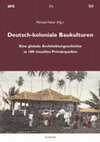
Kolonialarchitektur der deutschen südsee im mobilen taschenformat (1898) HerMann MÜCKler Kolonial... more Kolonialarchitektur der deutschen südsee im mobilen taschenformat (1898) HerMann MÜCKler Koloniale Bastelbögen von togo bis neuguinea. Schreibers volks-und heimatkundliche Bauhefte (1912) nana BaDenBerG Vom pittoresken Display zur ethnologischen typologie. ozeanien in der Berliner Kolonialausstellung (1896) und in der systematik von Hermann Frobenius (1899) MiCHael Falser Deutsch-koloniale Baukulturen ephemer. Die Kolonialhalle und das tropenhaus in der Berliner Gewerbeausstellung 1896 Britta lanGe Volkstümliche Kolonialpropaganda durch pittoreske architekturdisplays. Das Deutsche Kolonialmuseum in Berlin (1899/1900) joaCHiM Zeller Von der schilfhütte zum Prunkbau. ein neues Geschäftsgebäude für das Deutsche Kolonialhaus Bruno antelmann in Berlin (1903) nana BaDenBerG im auge des Betrachters. architektur des kolonialzeitlichen samoa im spiegel historischer ansichtskarten zu den samoa-Völkerschauen (1900/1910) HilKe tHoDe-arora samoa auf dem Münchner oktoberfest! Koloniale architekturdisplays zwischen rassismus, schaulust und Karikatur (1885/1910) CHristine taUBer Vom Zelt zum befestigen Marktplatz. Die landwirtschaftliche ausstellung in agome-Palime (1907) im deutsch-kolonialen togo elKe KatHarina WittiCH Das Koloniale Gehöft auf der Deutschen Werkbund-ausstellung Cöln 1914 im spiegel nationaler leitbilder und ihrer Gegentendenzen ariane KoMeDa X Eine Reise durch die Deutschen Kolonien (Südsee). eine leistungsschau deutscher Kolonialarchitektur von Palau bis saipan und apia (1911) HerMann MÜCKler Das Deutsche Kolonial-Quartett zeigt es spielerisch! Der Frauenbund der Deutschen Kolonialgesellschaft und sein engagement für Deutsch-südwestafrika (um 1930) nana BaDenBerG II.2 Blickregime zum kolonialen Bauen-Lichtbild, Stereofoto, Postkarte, Bildband, Film Vom "Panorama der Faktoreien" bis zur "neuen schönen landungsbrücke". eine reihe kolonialer architekturen und infrastrukturen im lichtbildervortrag (1896) Mona WisCHHoFF Der dreidimensionale Blick ins Kolonialmuseum in Berlin. stereofotos vom Heiligen Haus im Bismarck-archipel bis zum Hererolager in Deutsch-südwestafrika (1899) arne sCHöFert Der doppelte Blick auf Kaiser-Wilhelmsland/neuguinea. stereobilder von deutsch-kolonialen und lokalen Baukulturen in der astrolabebucht (ca. 1900) Dieter Klein Visual Media of Collective Memories. on the intimate relationship between Ansichtskarten, architecture, and German Colonialism (1898/1899) VolKer lanGBeHn Militärische Wehrbauten als Postkartenmotive? Zur pittoresken architektur der schutztruppen-Festungen in Deutsch-südwestafrika MiCHael HoFMann Die Fotostudios Vincenti und Dobbertin und ihre Postkartenproduktion in Dares -salaam, Deutsch-ostafrika (um 1910) MiCHael HoFMann ambivalente architektur-Modernen. Kolonialpropagandistische Farbfotografien in Die Deutschen Kolonien (1910-1941) jens jäGer XI Die Fortschritte der Zivilisation in Deutsch-Ostafrika. Kultur, Bildung und Urbanität im deutsch-kolonialen Film (1911/1912) WolFGanG FUHrMann Koloniale architektur als Filmschauplatz. Staatssekretär Solf besucht die deutsche Kolonie Togo von Hans schomburgk WolFGanG FUHrMann II.3 Schöne Künste und gebaute Kolonialhistorismen rudolf Hellgrewes koloniale Panoramen für die Deutsche armee-, Marine-und Kolonialausstellung von Berlin 1907 arne sCHöFert aquarell, skizze, Foto, reisebericht-oder was wir nicht sehen können. Der Palast von Foumban/Kamerun in deutsch-kolonialer Publizistik (1912/1914) steFanie MiCHels Zwischen Kolonialarchitektur und Going Native auf Palau und in Käwieng. emil nolde und Max Pechstein in der Kontaktzone der deutschen südsee (1913/1914) aya soiKa Vom kolonialen Machtsymbol zum Pappkameraden. Das reiterdenkmal in Windhoek/namibia, vormals Deutsch-südwestafrika (1912) joaCHiM Zeller ein elefant für Berlin und Bremen. Vom Kolonialkriegerdenkmal (1914) zum antikolonialen Mahnmal joaCHiM Zeller Vom Herrschaftsmal zum postkolonialen Debatten-Mahnmal. Das Wissmann-Denkmal von Daressalaam (1909), Bad lauterbach/Harz (1908) und Hamburg (1922/1968) joaCHiM Zeller idyll, trutz und neoromanik am Gelben Meer. Die Gouverneursvilla in tsingtau (1905-07) CHristoPH linD Von Veranden-Monumentalismen und Kirchen-Historismus bis industrie-Moderne. stilpluralismus in lome, der Hauptstadt von Deutsch-togo MiCHael HoFMann XIV Medizinal-Berichte für die deutschen Schutzgebiete. ein "eingeborenenkrankenhaus" für neu-Mecklenburg/Deutsch-neuguinea (1911/1912) MiCHael Falser Konzentrations-und Gefangenenlager. Bestrafungs-und Kontrollinstrument im Kolonialkrieg von Deutsch-südwestafrika (1906) joaCHiM Zeller Zerstörung als strafaktion und Wiederaufbau. Das Haus von Kaptein Hendrik Witbooi und die Missionskirche von Gibeon, Deutsch-südwestafrika (1904/1913) reinHart Kössler Menschenschutz-Heimatschutz-naturschutz! augustin Krämer und elisabeth Krämer-Bannow zu Baukulturen in der deutschen südsee (1913/1914) VolKer HarMs III.3 Kolonialarchitektur zwischen Revisionismus und neokolonialen Ambitionen Kampf um tsingtau 1914. Bilder von Konstruktion und Dekonstruktion in japans Kriegspropaganda (1914) taKUMa MelBer Koloniale Schuldlüge! Kolonialarchitektur als illustrationsmotiv in der kolonialrevisionistischen Publizistik der Zwischenkriegszeit riCHarD tsoGanG Fossi Rien que les images? over-writing the German Colonial Period in French-Mandate Cameroun. the nachtigal Hospital and Manga Bell's Pagoda in Douala (1931) MarK DiKe DelanCey Fertigbau, orientalismus, Propagandaobjekt. Die Verwandlungen eines regierungssitzes in Daressalam, (ehem.) Deutsch-ostafrika (1905-1928) Britta sCHillinG typische Bauten und leere Flächen. raumprojektionen von neuguinea bis togo in der Kolonial-ausstellung in stuttgart 1928 Britta lanGe XV ,exotistische' architektur zwischen sommerfrische und Kolonialrevisionismus. Neu-Afrika in ahrensdorf/templin (um 1930) joaCHiM Zeller ein vorbildlich deutsch-koloniales Farmerhaus? stilhybride Visionen in den kolonial-revisionistischen ausstellungen von Köln 1934 und Breslau 1936 Britta sCHillinG Zwischen objekt und Bühnenbild. Das Herero-Haus im Deutschen Kolonial-und Übersee-Museum Bremen (1937) silKe seyBolD Zum letzten Mal durch eine afrikanische Hüttenarchitektur zur deutschkolonialen ideal-Farm. Die Deutsche Kolonial-ausstellung Dresden 1939 arne sCHöFert Von der Urwaldkathedrale zur stadt Gottes. Die st.-Michaels-Basilika der steyler Mission in alexishafen, ehem. Deutsch-neuguinea (1939) PaUl steFFen Deutsch-koloniale architektur-einst propagiert und heute wieder hergestellt ? Bau, abriss und rekonstruktion des Bahnhofs von tsingtau (1901/1999-2006
Kunstchronik, 2021
Tableof Contents
Editorial
Contribtion Michael Falser: Von Windhuk bis Tsingtau und Samoa: Deutsc... more Tableof Contents
Editorial
Contribtion Michael Falser: Von Windhuk bis Tsingtau und Samoa: Deutsch-koloniale Architektur aus globaler Perspektive
Kunstchronik Journal, 2021
Kunstchronik, 2021
Themed volume on "Global Spaces of German Colonialism"
Die Denkmalpflege, 2021
Bericht zur Evaluierung der Österreichischen Tentativliste zum UNESCO Welterbe. Summary of an Eva... more Bericht zur Evaluierung der Österreichischen Tentativliste zum UNESCO Welterbe. Summary of an Evaluation Study of Austria's Tentative List to UNESCO World Heritage.
ARCH+ Contested Modernities. Postkoloniale Architektur und Ientitätskonstruktion in Südostasien, 2021
Heute wird Vann Molyvann von der Architekturgeschichte zu Recht als Hauptprotagonist der kambodsc... more Heute wird Vann Molyvann von der Architekturgeschichte zu Recht als Hauptprotagonist der kambodschanischen Nachkolonialmoderne gefeiert. Ein Problem jeder eng biografisch geführten Nacherzählung sogenannter „Stararchitekten“ ist dabei, dass der größere Gesamtkontext, in dem ein „individuelles Genie“ seine ganze Schaffenskraft überhaupt erst entfalten konnte, oft unterbewertet bleibt. In diesem Fall ist dies besonders relevant, da das ungewöhnlich umfangreiche Oeuvre von Vann Molyvann nicht nur in einer extrem kurzen Zeitspanne von knapp 15 Jahren zwischen 1956 und 1970 entstand, sondern eben auch in einem so kleinen Land wie Kambodscha, das gerade erst damit begonnen hatte, sich von seinem kolonialen Erbe zu befreien.
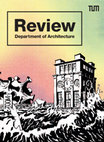
TUM Review, Department of Architecture, 2021
Despite its extremely short existence—a mere three decades—German colonialism (ca. 1884–1914) was... more Despite its extremely short existence—a mere three decades—German colonialism (ca. 1884–1914) was geopolitically-speaking a global project spanning several continents: from Africa (colonies of German East Africa, German South West Africa, Cameroun, and Togo) to Asia (back then Tsingtau and Kiautschou, today the Chinese
city of Qingdao and the Jiaozhou Bay area) and Oceania (parts of today’s New Guinea and Samoa). Its urbanist and architectural production was surprisingly rich and much of it, from whole new towns to infrastructural networks and individual buildings, still exists today.
In this sense, it is rather surprising that in the field of architectural history, no comprehensive studies, first, conceptualize German colonial building processes from a historical perspective as a globally connected project and, second, thematize structures that are still standing from a contemporary viewpoint as a kind of shared built heritage. This dual approach is at the core of a new research project which the present author conceived and implemented since March 2020 at the Technical University of Munich.
Kunstchronik, 2021
This is a review of the exhibition "Richard Neutra - Wohnhäuser in Kalifornien" in Wien Museum/Au... more This is a review of the exhibition "Richard Neutra - Wohnhäuser in Kalifornien" in Wien Museum/Austria of 2020

Kultur - Erbe - Ethik, 2020
The international community condemned the incident as an act of vandalism and barbarity, defende... more The international community condemned the incident as an act of vandalism and barbarity, defended the concept of heritage in the name of humanity and proposed ideas for the reconstruction of the Buddhas. What makes the case of Bamiyan are the following observations: lt is the tenor of this paper that the destruction of the Bamiyan Buddhas was not an act of barbarian vandalism, but the first large scale live-act of performative iconoclasm against the physical and mental image of heritage in the age of the internet. Additionally, the case of the Bamiyan incident has exposed the fragile status and reputation of cultural heritage as an intellectual concept defined by the West and points to the need for a more responsible use of images on the part of the international preservation community for its propagation of the concept of cultural heritage, especially in mass media.
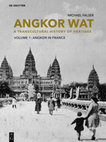
Angkor Wat - A Transcultural History of Heritage, 2020
This book unravels the formation of the modern concept of cultural heritage by charting its colon... more This book unravels the formation of the modern concept of cultural heritage by charting its colonial, postcolonial-nationalist and global trajectories. By bringing to light many unresearched dimensions of the twelfth-century Cambodian temple of Angkor Wat during its modern history, the study argues for a conceptual, connected history that unfolded within the transcultural interstices of European and Asian projects. With more than 1,400 black-and-white and colour illustrations of historic photographs, architectural plans and samples of public media, the monograph discusses the multiple lives of Angkor Wat over a 150-year-long period from the 1860s to the 2010s.
Volume 1 (Angkor in France) reconceptualises the Orientalist, French-colonial ‘discovery’ of the temple in the nineteenth century and brings to light the manifold strategies at play in its physical representations as plaster cast substitutes in museums and as hybrid pavilions in universal and colonial exhibitions in Marseille and Paris from 1867 to 1937.
Volume 2 (Angkor in Cambodia) covers, for the first time in this depth, the various on-site restoration efforts inside the ‘Archaeological Park of Angkor’ from 1907 until 1970, and the temple’s gradual canonisation as a symbol of national identity during Cambodia’s troublesome decolonisation (1953–89), from independence to Khmer Rouge terror and Vietnamese occupation, and, finally, as a global icon of UNESCO World Heritage since 1992 until today.
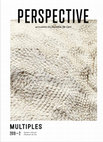
(Perspectives 2019.2: Multiples), 2019
Les moulages en plâtre au xxie siècle: Un débat entre Malcolm Baker, Michael Falser, Antoinette L... more Les moulages en plâtre au xxie siècle: Un débat entre Malcolm Baker, Michael Falser, Antoinette Le Normand-Romain et Veronika Tocha, mené par Eckart Marchand
On constate, depuis une trentaine d’années, un véritable regain d’intérêt pour les moulages en plâtre et les collections de moulages. Une série de colloques internationaux ont été consacrés au sujet en France à la fin des années 1980 et dans les années 1990, suivis de manifestations similaires en Italie, en Angleterre, aux États-Unis, en Pologne, en Allemagne et ailleurs. Ces événements avaient souvent pour objectif de défaire l’image des moulages forgée au début du xxe siècle, à savoir des copies mécaniques réalisées dans un matériau terne et bon marché, et qui étaient donc, de ce fait, délaissés ou retirés, voire détruits ; des collections entières ont ainsi disparu. Aujourd’hui, partout dans le monde, on réévalue l’intérêt des plâtres...
Paulskirche - A political story of architecture, 2019
A critical review of the rebuildung strategies (in German: Wiederaufbau) in Germany after 1945, w... more A critical review of the rebuildung strategies (in German: Wiederaufbau) in Germany after 1945, with a focus on the famous Paulskirche in Frankfurt/Main.
Engaging Transculturality (Routledge), 2019
What has been largely overlooked in the discussion of colonial art history is that whole Oriental... more What has been largely overlooked in the discussion of colonial art history is that whole Oriental architectures were also transferred into the colonizer’s or Occidental collector’s museums. These monumental translations were not only the most spectacular modern-day operations in the field of material culture translations between the Orient and the Occident but are also unique case studies with which to open up the classical field of architectural historiography to a truly transcultural and global perspective.
Debate about the concept of authenticity and architectural reconstruction in the German context o... more Debate about the concept of authenticity and architectural reconstruction in the German context of historic preservation, with special focus on the recent discussion about the Humboldt Forum in Berlin.
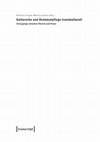
Das Konzept der Transkulturalität beleuchtet Transformationsprozesse, die sich in Begegnungen und... more Das Konzept der Transkulturalität beleuchtet Transformationsprozesse, die sich in Begegnungen und den darauf folgenden Beziehungen zwischen Regionen und Kulturen entfalten. Der Begriff der Transkulturalität kann sich sowohl auf ein konkretes Untersuchungsobjekt beziehen, als auch als eine heuristisch-analytische Kategorie herangezogen werden. Das Präfix trans ermöglicht die Befreiung von jener gängigen Definition von ›Kulturen‹, die sie als ethnisch, religiös oder nationalstaatlich homogene Essenzen festschreibt. Sie geht auf die territorialbezogene Bildung von Nationalstaaten im späten 18. und 19. Jahrhundert in Europa zurück und
fand im 20. Jahrhundert in den jungen postkolonialen Nationen von Afrika bis Asien eine weitere Verankerung. Eine transkulturelle Sicht hingegen sensibilisiert für eine dynamischere Bezeichnung von Kultur, die aus Konstellationen grenzüberschreitender Mobilität konstituiert wird und in einem stetigen Prozess des Wandels eingeschrieben ist. Dieser Ansatz macht Akteure, Prozesse und Phänomene jenseits der bisher als statisch verstandenen Kulturgrenzen »sagbar« und ermöglicht dabei eine als polyvalent und reziprok konzipierte Beziehungsgeschichte.

Under the motto A Future for Our Past, the European Architectural Heritage Year of 1975 was the m... more Under the motto A Future for Our Past, the European Architectural Heritage Year of 1975 was the most important and successful campaign of its time for the preservation and valorisation of architectural heritage in Europe. With its recognition of the importance of urbanistic ensembles, of the plurality within the categories of historic monuments, of citizens' engagement, and finally, of legal and administrative measures for monument protection, this European campaign had a sustainable impact. Its programmatic approaches and conceptual ideas are of high importance for the present, and motivate new interpretations for the future. This publication is the first comprehensive appraisal of 1975 European Architectural Heritage Year for its 40 th anniversary in 2015. More than 40 international authors comment on the participating countries, the campaign's influences in the East Bloc Countries, and its Non-European reception. ICOMOS Austria has, with its two editors and in collaboration with ICOMOS committees of Germany, Luxemburg and Switzerland, initiated this third volume of the MONUMENTA series.
This is the introduction to this edited volume to discuss the cultural, political and historical circumstances around the 1975 Heritage Campagin.

This paper conceptualises modern, locally developed avalanche protection systems in the Swiss Alp... more This paper conceptualises modern, locally developed avalanche protection systems in the Swiss Alps as " alpine landscapes of defence, " which marked the decisive turning point when the alpine nations of Europe switched from early-modern reactive to modern Alpine proactive/preventive risk management against natural hazards. Using the sophisticated system of dry rubble wall constructions above the small mountain village of Goppenstein along the Bern-L€ otschberg-Simplon railway line (built in the mid-1930s as a reaction to a deadly powder snow avalanche in 1908), this paper discusses, first, the hybrid technological history of these avalanche protection systems, which combined the tacit knowledge of local mountain-dwellers, the know-how of railway engineers, and the developing scientific research on Alpine natural hazards; second, aspects of a cultural sociology of risk are pondered by acknowledging avalanche protection areas as useful entities for the analysis of the high-modern cultural history of Switzerland in particular, and of the modern narrative of a gradual cultivation of nature from tentative appropriation to final human mastery in general. Lastly, the unique cultural and historical value of local avalanche protection systems in dry rubble wall construction is discussed, considering the aspects of climate change, biodiversity, and the preservation of historic cultural landscapes.





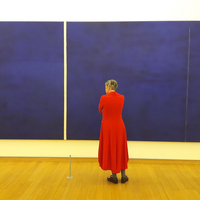




Uploads
Papers by Michael S. Falser
Editorial
Contribtion Michael Falser: Von Windhuk bis Tsingtau und Samoa: Deutsch-koloniale Architektur aus globaler Perspektive
city of Qingdao and the Jiaozhou Bay area) and Oceania (parts of today’s New Guinea and Samoa). Its urbanist and architectural production was surprisingly rich and much of it, from whole new towns to infrastructural networks and individual buildings, still exists today.
In this sense, it is rather surprising that in the field of architectural history, no comprehensive studies, first, conceptualize German colonial building processes from a historical perspective as a globally connected project and, second, thematize structures that are still standing from a contemporary viewpoint as a kind of shared built heritage. This dual approach is at the core of a new research project which the present author conceived and implemented since March 2020 at the Technical University of Munich.
Volume 1 (Angkor in France) reconceptualises the Orientalist, French-colonial ‘discovery’ of the temple in the nineteenth century and brings to light the manifold strategies at play in its physical representations as plaster cast substitutes in museums and as hybrid pavilions in universal and colonial exhibitions in Marseille and Paris from 1867 to 1937.
Volume 2 (Angkor in Cambodia) covers, for the first time in this depth, the various on-site restoration efforts inside the ‘Archaeological Park of Angkor’ from 1907 until 1970, and the temple’s gradual canonisation as a symbol of national identity during Cambodia’s troublesome decolonisation (1953–89), from independence to Khmer Rouge terror and Vietnamese occupation, and, finally, as a global icon of UNESCO World Heritage since 1992 until today.
On constate, depuis une trentaine d’années, un véritable regain d’intérêt pour les moulages en plâtre et les collections de moulages. Une série de colloques internationaux ont été consacrés au sujet en France à la fin des années 1980 et dans les années 1990, suivis de manifestations similaires en Italie, en Angleterre, aux États-Unis, en Pologne, en Allemagne et ailleurs. Ces événements avaient souvent pour objectif de défaire l’image des moulages forgée au début du xxe siècle, à savoir des copies mécaniques réalisées dans un matériau terne et bon marché, et qui étaient donc, de ce fait, délaissés ou retirés, voire détruits ; des collections entières ont ainsi disparu. Aujourd’hui, partout dans le monde, on réévalue l’intérêt des plâtres...
fand im 20. Jahrhundert in den jungen postkolonialen Nationen von Afrika bis Asien eine weitere Verankerung. Eine transkulturelle Sicht hingegen sensibilisiert für eine dynamischere Bezeichnung von Kultur, die aus Konstellationen grenzüberschreitender Mobilität konstituiert wird und in einem stetigen Prozess des Wandels eingeschrieben ist. Dieser Ansatz macht Akteure, Prozesse und Phänomene jenseits der bisher als statisch verstandenen Kulturgrenzen »sagbar« und ermöglicht dabei eine als polyvalent und reziprok konzipierte Beziehungsgeschichte.
This is the introduction to this edited volume to discuss the cultural, political and historical circumstances around the 1975 Heritage Campagin.
Editorial
Contribtion Michael Falser: Von Windhuk bis Tsingtau und Samoa: Deutsch-koloniale Architektur aus globaler Perspektive
city of Qingdao and the Jiaozhou Bay area) and Oceania (parts of today’s New Guinea and Samoa). Its urbanist and architectural production was surprisingly rich and much of it, from whole new towns to infrastructural networks and individual buildings, still exists today.
In this sense, it is rather surprising that in the field of architectural history, no comprehensive studies, first, conceptualize German colonial building processes from a historical perspective as a globally connected project and, second, thematize structures that are still standing from a contemporary viewpoint as a kind of shared built heritage. This dual approach is at the core of a new research project which the present author conceived and implemented since March 2020 at the Technical University of Munich.
Volume 1 (Angkor in France) reconceptualises the Orientalist, French-colonial ‘discovery’ of the temple in the nineteenth century and brings to light the manifold strategies at play in its physical representations as plaster cast substitutes in museums and as hybrid pavilions in universal and colonial exhibitions in Marseille and Paris from 1867 to 1937.
Volume 2 (Angkor in Cambodia) covers, for the first time in this depth, the various on-site restoration efforts inside the ‘Archaeological Park of Angkor’ from 1907 until 1970, and the temple’s gradual canonisation as a symbol of national identity during Cambodia’s troublesome decolonisation (1953–89), from independence to Khmer Rouge terror and Vietnamese occupation, and, finally, as a global icon of UNESCO World Heritage since 1992 until today.
On constate, depuis une trentaine d’années, un véritable regain d’intérêt pour les moulages en plâtre et les collections de moulages. Une série de colloques internationaux ont été consacrés au sujet en France à la fin des années 1980 et dans les années 1990, suivis de manifestations similaires en Italie, en Angleterre, aux États-Unis, en Pologne, en Allemagne et ailleurs. Ces événements avaient souvent pour objectif de défaire l’image des moulages forgée au début du xxe siècle, à savoir des copies mécaniques réalisées dans un matériau terne et bon marché, et qui étaient donc, de ce fait, délaissés ou retirés, voire détruits ; des collections entières ont ainsi disparu. Aujourd’hui, partout dans le monde, on réévalue l’intérêt des plâtres...
fand im 20. Jahrhundert in den jungen postkolonialen Nationen von Afrika bis Asien eine weitere Verankerung. Eine transkulturelle Sicht hingegen sensibilisiert für eine dynamischere Bezeichnung von Kultur, die aus Konstellationen grenzüberschreitender Mobilität konstituiert wird und in einem stetigen Prozess des Wandels eingeschrieben ist. Dieser Ansatz macht Akteure, Prozesse und Phänomene jenseits der bisher als statisch verstandenen Kulturgrenzen »sagbar« und ermöglicht dabei eine als polyvalent und reziprok konzipierte Beziehungsgeschichte.
This is the introduction to this edited volume to discuss the cultural, political and historical circumstances around the 1975 Heritage Campagin.
Picturesque Modernities. Architectural Studies in Global Regionalism (1890-1850). Edited by Michael Falser
Une méthodologie novatrice se met ici en place pour la discipline émergente qu’est la Global Architectural History. En se concentrant sur le passage du haut impérialisme européen autour de 1900 à l’ère coloniale tardive des années 1940, l’ouvrage étudie les liens entre les métropoles et les colonies. Plus précisément, il propose une nouvelle lecture de la dénomination architecturale, formelle et stylistique du « régionalisme mondial », tout en le conceptualisant, pour la première fois, comme un outil effectif dans la formation et la stabilisation des états-nations et des empires.
Les auteurs internationaux analysent les enchevêtrements entre les Étatsnations (la France, la Grande-Bretagne, les Pays-Bas, l’Allemagne, l’Union soviétique et les États-Unis) et leurs périphéries continentales avec leurs colonies et territoires sous mandat (l’Afrique du Nord et l’Indochine, l’Iraq, les Indes occidentales néerlandaises, Deutsch Ost-Afrika, l’Asie centrale et
New Mexico).
Il s’agit d’offrir ici une nouvelle perspective conceptuelle sur la place du régionalisme dans l’histoire globale de l’architecture. Elle sera utile aux étudiants et aux chercheurs avancés.
Michael Falser est un historien autrichien de l’architecture avec une spécialisation sur l’architecture mondiale de l’époque de colonialisme. Il est directeur de projet et professeur associé à la Chaire de la Théorie et de l’Histoire de l’Architecture, Art et Design de l’Université technique de Munich, Allemagne.
From about 1880 to 1920, the then German Empire was one of the colonial powers of Europe. The colonial territory included territories on three continents: in Africa (German Southwest Africa, Cameroon, Togo, German East Africa), East Asia/China (Kiautschou/Tsingtau) and Oceania (German New Guinea, Micronesia to Samoa). German colonists oppressed the inhabitants of the occupied countries with great brutality and left visible traces to this day - also in architecture. This publication is the first to present a global architectural history of the German colonial period. With 100 critically illuminated case studies, a total of 59 authors present print sources on the broader topic of German-colonial building and thus for the first time span the arc from Windhoek and Dar es Salaam to Tsingtau and Samoa - and back to the German Reich. The catalogue focuses on visual evidence with an explicit reference to architecture: plans, drawings, maps, detailed sketches, photographs, artistic representations and examples of advertising graphics, postcards, panoramas, light and stereo images and early colonial films.
GERMAN:
Von ca. 1880 bis 1920 gehörte das damalige Deutsche Reich zu den Kolonialmächten Europas. Das Kolonialgebiet umfasste Territorien auf drei Kontinenten: in Afrika (Deutsch- Südwestafrika, Kamerun, Togo, Deutsch-Ostafrika), Ostasien /China (Kiautschou /Tsingtau) und Ozeanien (Deutsch Neuguinea, Mikronesien bis Samoa). Mit großer Brutalität unterdrückten deutsche Kolonist*innen die Bewohner*innen der besetzten Länder und hinterließen bis heute sichtbare Spuren – auch in der Architektur. Die vorliegende Publikation präsentiert erstmals eine globale Architekturgeschichte der deutschen Kolonialzeit. Mit 100 kritisch ausgeleuchteten Fallbeispielen stellen insgesamt 59 Autor*innen Printquellen zum erweiterten Themenkreis des deutsch-kolonialen Bauens vor und spannen so zum ersten Mal den Bogen von Windhoek und Daressalam bis Tsingtau und Samoa – und zurück ins Deutsche Reich. Im Vordergrund des Katalogs stehen dabei visuelle Belegstücke mit explizitem Architekturbezug: Pläne, Zeichnungen, Karten, Detailskizzen, Fotografien, künstlerische Darstellungen und Beispiele von Werbegrafik, Postkarten, Panoramen, Licht- und Stereobildern und frühen Kolonialfilmen.
The present book, conceived by Michael Falser, pursues the approach of linking historical insights with contemporary relevant questions: therefore, the main part deals with the urban planning and architectural implementation of the Austro-Hungarian Concession in Tientsin (1901-1917) and brings to light more than 200 historical maps, sketches, plans, and photographs of previously unknown archival material, before examining the strategies of the city government of present-day Tianjin to promote the architectural relics of the former imperialist era as Chinese cultural heritage (Michael Falser).
In addition, an introduction (by Georg Lehner) sheds light on the historical process of rapprochement of Austria(-Hungary) with the so-called Middle Kingdom over the 19th century, while an extensive appendix provides further valuable visual sources and references.
This book unravels the formation of the modern concept of cultural heritage by charting its colonial, postcolonial-nationalist and global trajectories. By bringing to light many unresearched dimensions of the twelfth-century Cambodian temple of Angkor Wat during its modern history, the study argues for a conceptual, connected history that unfolded within the transcultural interstices of European and Asian projects. With more than 1,400 black-and-white and colour illustrations of historic photographs, architectural plans and samples of public media, the monograph discusses the multiple lives of Angkor Wat over a 150-year-long period from the 1860s to the 2010s.
Volume 1 (Angkor in France) reconceptualises the Orientalist, French-colonial ‘discovery’ of the temple in the nineteenth century and brings to light the manifold strategies at play in its physical representations as plaster cast substitutes in museums and as hybrid pavilions in universal and colonial exhibitions in Marseille and Paris from 1867 to 1937.
Volume 2 (Angkor in Cambodia) covers, for the first time in this depth, the various on-site restoration efforts inside the ‘Archaeological Park of Angkor’ from 1907 until 1970, and the temple’s gradual canonisation as a symbol of national identity during Cambodia’s troublesome decolonisation (1953–89), from independence to Khmer Rouge terror and Vietnamese occupation, and, finally, as a global icon of UNESCO World Heritage since 1992 until today.
preservation and valorisation of architectural heritage in Europe. With its recognition of the importance of urbanistic ensembles, of the plurality within the categories of
historic monuments, of citizens’ engagement, and finally, of legal and administrative measures for monument protection, this European campaign had a sustainable impact.
Its programmatic approaches and conceptual ideas are of high importance for the present, and motivate new interpretations for the future. This publication is the first comprehensive
appraisal of 1975 European Architectural Heritage Year for its 40th anniversary in 2015. More than 40 international authors comment on the participating countries,
the campaign’s influences in the East Bloc Countries, and its Non-European reception. ICOMOS Austria has, with its two editors and in collaboration with ICOMOS committees
of Germany, Luxemburg and Switzerland, initiated this third volume of the MONUMENTA series.
The themes examined range from architectural and intellectual history to historic preservation and restoration. Taken together, they offer an overview of historical processes spanning two centuries of institutional practices, wherein the concept of cultural heritage was appropriated both by political regimes and for UNESCO World Heritage agendas.
Dieser Band stellt mit Fallbeispielen aus aller Welt die kulturwissenschaftliche Denkfigur der »Transkulturalität« vor, mit der sich neue Zugangsformen zu Kulturerbe ergeben: mit einer Wertschätzung grenzüberschreitender Kontaktzonen, flüchtig-bildhafter Erscheinungsformen, hybrid-ephemerer Materialität und heterogener Identitätskonstruktionen.
Case studies from computational modelling in archaeology discuss a comparable paradigmatic change from a mere simulation of supposedly dead archaeological building material to an increasing appreciation and scientific incorporation of the knowledge of local stakeholders. This book seeks to bring these different approaches from the humanities and engineering sciences into a transdisciplinary discussion.
Sechs denkmalpolitische Fallbeispiele zwischen 1800 und 2000 – von Schinkel bis zum Abriss des DDR-Palastes der Republik in Berlin – ermöglichen ausschnitthaft eine überfällige Rückschau auf 200 Jahre deutsche Denkmalpflege.
Zwischen Identität und Authentizität
In welchem Kontext entstand die Institution Denkmalpflege in Deutschland und wie korrelier(t)en ihre Handlungsparameter gegenüber kulturellem Erbe mit dem deutschen Nation-Buildung-Prozess? – Und umgekehrt: Wie hat sich die durch zahlreiche Brüche geprägte deutsche Nationalidentität auf zeitspezifische Umgangsstrategien mit Baudenkmälern
ausgewirkt?
Nationaler Selbstzweifel und bauliche Rekonstruktion bzw. Simulation
Die Geschichte der Konstruktion deutscher Nationalidentität von ihren Anfängen um 1800 bis über 1990 hinaus ist jene von nationaler Verspätung, ideologischer Pervertierung und innerer Abspaltung, selbst auferlegtem Zeitdruck bis übereiltem Nachholbedarf. Diese in kurzen Intervallen immer wieder unterschiedlich profilierte Nationalkonstruktion übte bis heute auf reale Baudenkmäler (in ihrer materiellen Grunddisposition Medien langsamer Veränderung) einen ideologischen Leistungsdruck aus, dem jene oftmals nur durch die Strategie der baulichen Rekonstruktion und letztlich sogar nur mehr durch die der oberflächlichen Simulation gerechtwerden konnten.
their stylistic group name, 'Preah Ko-Style'. Despite its importance, Preah Ko was rarely acknowledged in detail in academic literature. It is the general aim of this publication to analyze Preah Ko in its historical, archaeological, architectural, stylistical and contemporary social and religious questions and to understand the whole complex as a 'historical palimpsest', since its dynamic history was (over-) written several times until today. In the 20th century, several alterations took place, especially in French colonial times in the 1930s, during the
time of the war between the Red Khmer and the Vietnamese in the 1970s and the Hungarian and German
restoration phases in the 1990s until today.
With a unique collection of illustrations, this book is meant as a kind of source book of the 'Preah Ko-Style' with the temple of Preah Ko in its centre. Its well preserved stone, brick and especially stucco decorations amaze conservation and art experts, and tourists alike.
Prof. Gauvin Alexander Bailey, Queen's University, Ontario/Canada. Book Review: Unmasking Angkor Wat - A French-made Invention of Tradition. (Kunstchronik, 12.2020, pp. 604-611)
A travers l'ethnographie, l'anthropologie et l'archéologie. Comment un temple asiatique entre dans le canon de l'histoire de l'art européen (Archimuse, Bordeaux 29 November 2017)
Time & Date: 3-5 December 2015
Austrian Museum of Folk Life and Folk Art & Austrian Academy of Sciences, Vienna
International conference jointly organized by the Cluster of Excellence „Asia and Europe in a Global Context”, Heidelberg University (Global Art History), the Austrian Museum of Folk Life and Folk Art, and the Institute of Culture Studies and Theatre History of the Austrian Academy of Sciences. In association with the DFG-Research Group “Transcultural Negotiations in the Ambits of Art”, Institute of Art History at the FU Berlin.
Did late colonial/imperial regimes use engagement with peripheral cultures and the staging of regional art forms as a strategy to stabilise central governments? What role did the academic disciplines and the techniques and media involved, such as photography, film, book publications, museums and exhibitions, play in any such strategy? And, which institutions and individual actors can be considered to be the driving forces behind such actions?
This English-language conference applies a transcultural approach and focuses both on European peripheries (looking primarily at the territories and crown lands of the late Austro-Hungarian Empire) and overseas colonies (looking primarily at Asia) in the years between 1900 and 1950.
Homepage of the Conference: www.asia-europe.uni-heidelberg.de/en/the-picturesque-eye
International Conference, 3-4 November 2023
Vorhoelzer-Forum, Technical University of Munich/Germany
(Arcisstr. 21 80333 Munich/Germany and online)
Organizers: ICOMOS Germany and Technical University of Munich
Funded by the Federal Government Commissioner for Culture and the Media (BKM)
Registration required (limited number of seats, online link): https://forms.gle/QbCkJF6RXRXgeGPG9
Information Contact: icomos@icomos.de and michael.falser@tum.de
Monuments and Sites de-colonial! will be dealing with the architectural relics of the German colonial era and investigating post-colonial strategies of appropriation and critical communication regarding these buildings. In addition to references to pre-colonial legacies, the focus lies primarily on the period of the German colonial era from around 1880 to 1920. The spectrum of case studies will refer both to the territory of the German Empire itself at the time, as well as to the former German colonies in Africa, East Asia and the South Pacific.
With regard to the identification, systematic inventory and visualization of colonial-era individual buildings and ensembles, of monuments and even entire cities and infrastructural landscapes, as well as of today's commemorative and memorial sites and places, the focus of interest is primarily on the political, civic and architectural / artistic forms of appropriation on site and the strategies of dealing with them in terms of scientific methodology and monument conservation.
The two-day symposium, with an introduction, 6 sessions with 23 papers of altogether 35 speakers and a final wrap-up discussion, intends to increase the visibility and knowledge of this architectural heritage from the German colonial era and to promote dialogue with today's custodians or those concerned on site.
The conference is a cooperation between ICOMOS Germany (Homepage) and the TU Munich (Michael Falser). Selected papers will be published after the conference in the series ICOMOS – Journals of the German National Committee.
The organizing committee: Tino Mager, Gabriele Horn, John Ziesemer (ICOMOS Germany), and Michael Falser (TU Munich).
Our present model of “world heritage” owes much of its genealogy to the geopolitics of Empire. This hypothesis aims to expand prevailing narratives, which track the rise of “world heritage” programs starting with the creation of UNESCO after WWII and the elevation of monument preservation to international law (Allais 2018). In the century leading up to these events, however, state and non-state actors traveled throughout colonial territories with the self-ordained mission to study, document, and restore precolonial cultural sites, which often became “historic monuments” as part of an imposed scheme of “cultural heritage as civilizing mission” (Falser 2015).
These iconic monuments did not remain in situ. They traveled to imperial metropoles in the form of fragments, facsimiles, plaster casts, drawings, and photographs, facilitating their further mobility and thus expanding their reception as icons of “civilization.” Iconicity’s affordance for circulation was hardly unique to the Age of Empire, however. Many of these structures were sites of age-old religious worship and transregional pilgrimage beyond political boundaries (e.g., Angkor Wat in Cambodia), but underwent a secular turn and taxonomic shift within networks of colonial exploitation—from the pages of scholarly journals, to the halls of museums, to performative spectacles at World’s Fairs. Such phenomena initiated the modern “world heritage imaginary” as a regime of monument worship with its own systems of secular governance between the “original” sites and their multi-sited substitutes.
In this session, we aim to cultivate genealogies of “world heritage” during the height of Empire, ca. 1870-1940, even if projects before this core period offer crucial points of reference. We seek contributions that explore how disciplinary expertise was developed and deployed—long before the UNESCO heritage-scape—to identify and (re)build historic structures as “historic monuments” beyond the boundaries of the modern European nation state. Key research questions emerge: What were the criteria for classifying heritage sites and to what extent were their pre-existing cultural and religious meanings appropriated into secular forms of iconicity? What role did indigenous knowledge and labor play in the circulation of monuments within and beyond empires? How did juridical frameworks develop alongside practices of cross-regional monument preservation? How do we situate the violence of colonial expansion within aspirations toward “global community” and the idealism of early internationalist programs (Crinson 2017)? Papers should focus on the material and discursive practices of “world heritage” or “heritage of humanity” and their far-reaching implications among disparate communities, polities, and economies.
Michael Falser, Heidelberg University
David Sadighian, Harvard University
Contact : David Sadighian, Email : sadighian@fas.harvard.edu
The conference aims to understand the rising contributions of socialist and non-aligned actors to the development of heritage at both domestic and international levels. This phenomenon was in part the result of country-specific factors – such as a reaction to rapid industrial development; the destruction of both the Second World War or wars of national liberation; and the necessity to (re)-invent national traditions on socialist terms. But it was also due the growth of a broader international consensus on international heritage protection policies – in which socialist and non-aligned states and their experts played an important role. To this end, the conference will also address the relationship between socialist conceptions of heritage and those found in the capitalist world: to what extent can we discern the convergence of Eastern and Western dynamics of heritage discourses and practices over the second half of the twentieth century? To what degree did heritage professionals from socialist states play a role in the formation of the transnational and transcultural heritage expertise? To what extent did heritage still play a role in Cold War competition? Socialist states claimed that their respect for progressive traditions and material culture distinguished their superior methods of development from that of the capitalist world. Non-Aligned countries often attempted to blend aspects of socialist and capitalist logics of cultural heritage politics.
With regard to the identification, systematic inventory and visualization of colonial-era individual buildings and ensembles, of monuments and even entire cities and infrastructural landscapes, as well as of today's commemorative and memorial sites and places, the focus of interest will primarily be on the political, civic and architectural / artistic forms of appropriation on site and the strategies of dealing with them in terms of scientific methodology and monument conservation.
The two-day symposium aims to increase the visibility and knowledge of this architectural heritage from the German colonial era and to promote dialogue with today's custodians or those concerned on site. Four sections will question for instance: Which architectural traces of German colonialism are still visible today in Germany and in the former German colonies? How can these buildings be identified and documented, especially with regard to their post-colonial existence? Which contem-porary methods and critical strategies of dealing with former German colonial architecture are emerging today? How can these methods and strategies be systematically documented and under-stood? And how do today's users and custodians or heirs and heritage communities on the territory of the former German Reich and in the former German colonies in Africa, Asia and Oceania contrib-ute to the decolonization of this building stock? How can constructive dialogue and professional ex-change in the sense of “shared heritage” be promoted beyond today's national borders?
The conference will be a cooperation between ICOMOS Germany (Homepage) and the TU Munich (Project Homepage). Selected papers will be published after the conference in the series ICOMOS – Journals of the German National Committee.